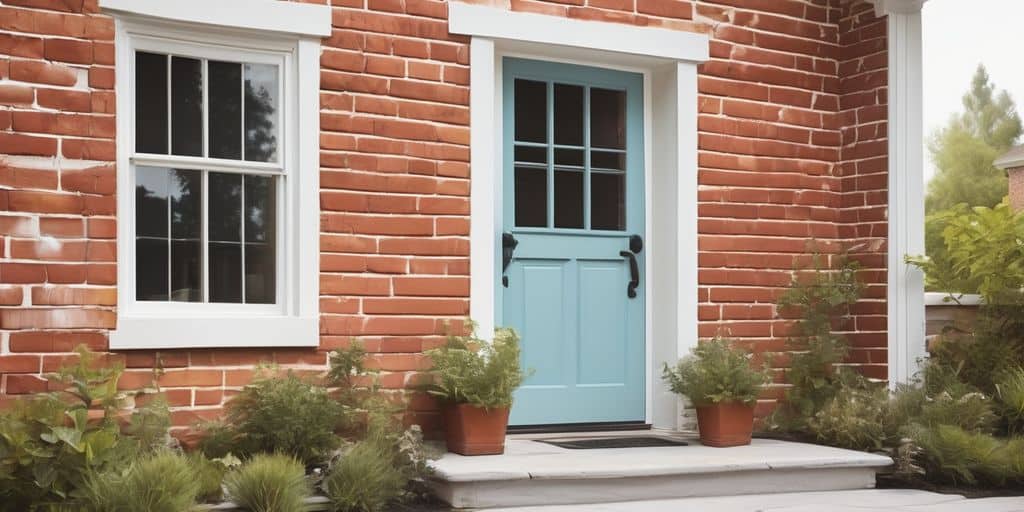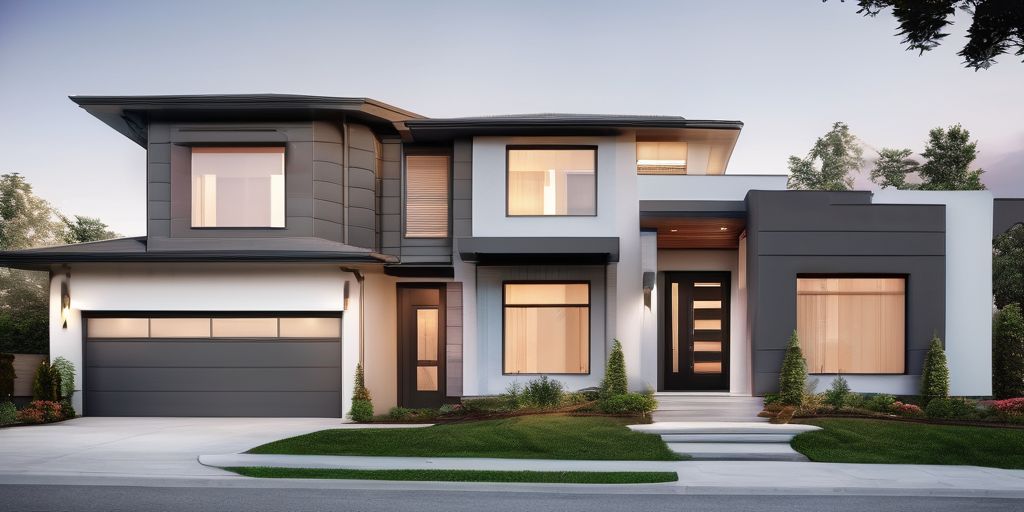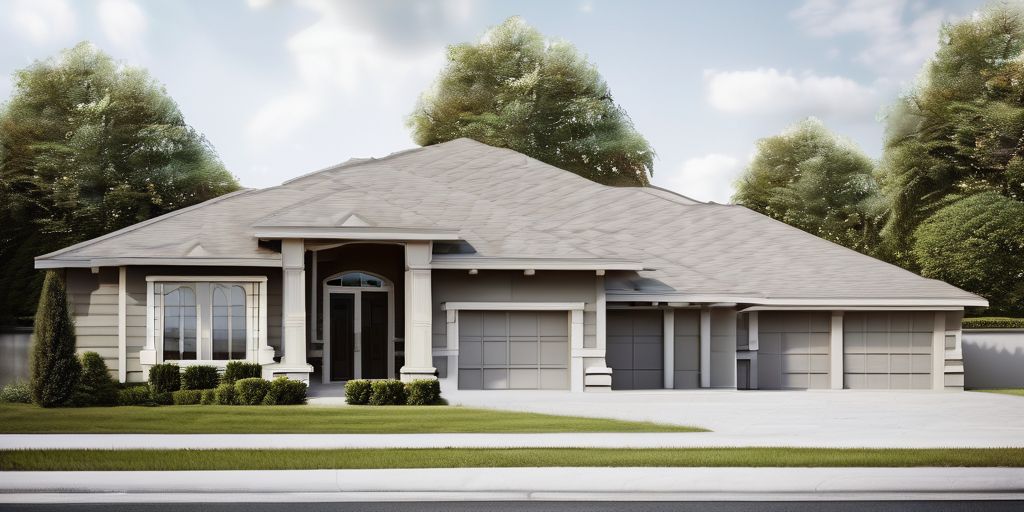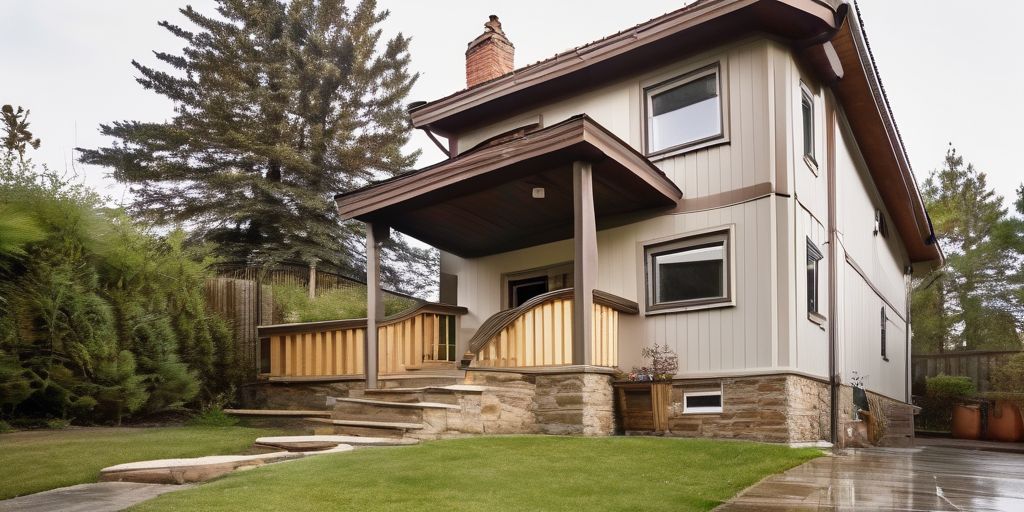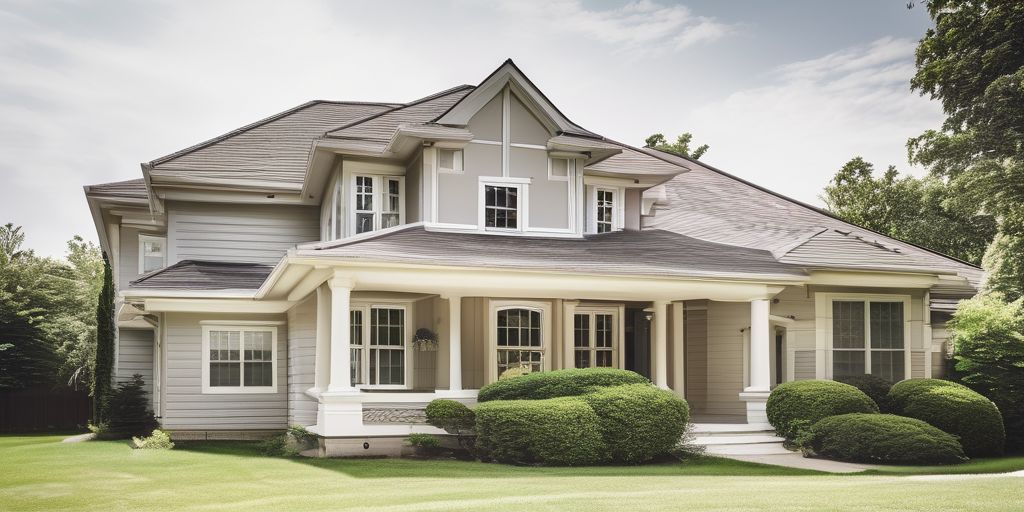Painting brick can be tricky because of its rough surface. But if you want to keep that cool brick look, you need to use the right techniques. This article will show you how to paint brick while keeping its unique texture.
Key Takeaways
- Brick is different from other surfaces and needs special care when painting.
- Cleaning and fixing the brick before painting is super important.
- Use thin layers of paint and go with the brick’s texture for the best look.
- There are other ways to change brick color, like whitewashing or staining.
- Keep painted brick looking good by cleaning it and checking for damage often.
Understanding Brick’s Unique Characteristics
Brick is a timeless building material known for its durability, character, and classic charm. While many homeowners and property managers contemplate painting their brick surfaces to give them a fresh look or cover imperfections, it’s essential to recognize that not every brick surface is suitable for painting. In this blog, we’ll provide insights from experienced Brick Painters to
Essential Preparations Before Painting
Before you start painting, it’s important to get the brick surface ready. Proper prep work ensures that the paint will adhere smoothly and that your efforts will last a long time.
Techniques for Painting Brick
Using the Right Tools
To get the best results when painting brick, it’s important to use the right tools. High-quality brushes and rollers designed for textured surfaces are essential. You might also need a paint sprayer for larger areas. Make sure to have drop cloths, painter’s tape, and a sturdy ladder if you’re working on a tall structure.
Applying Paint in Thin Layers
When painting brick, it’s best to apply the paint in thin layers. This helps the paint adhere better and reduces the risk of peeling. Start with a thin coat and let it dry completely before adding another. This method ensures a more even finish and helps preserve the natural texture of the brick.
Painting in the Direction of the Texture
Always paint in the direction of the brick’s texture. This technique helps the paint get into all the nooks and crannies, providing better coverage. It also helps maintain the brick’s unique look. Use a brush for detailed areas and a roller for larger sections to ensure a smooth application.
Remember, taking your time and using the right techniques can make a big difference in the final result. Patience and attention to detail are key to preserving the beauty of your brick surface.
Alternative Methods to Full Painting
If painting isn’t the best choice for your brick surfaces, there are several other ways to enhance their look and address specific issues. These methods can help you keep the unique texture and character of the brick while giving it a fresh appearance.
Whitewashing for a Subtle Look
Whitewashing is a great way to let the texture and character of the brick show through. It’s a more subtle alternative to full painting and can create a soft, aged appearance. To whitewash, mix water and white paint in a 1:1 ratio and apply it with a brush or sponge. This method allows you to control the coverage and achieve the desired look.
Staining to Enhance Natural Beauty
Staining is another excellent option to enhance the natural beauty of brick. Unlike paint, stain penetrates the brick, allowing the natural texture to remain visible. Choose a high-quality stain and apply it with a brush or sprayer. Staining is particularly effective for bricks that have a lot of character and variation in color.
German Smear Technique
The German smear technique involves applying a mixture of mortar and water to the brick surface. This method gives the brick a rustic, old-world look. To achieve this effect, spread the mortar mixture over the bricks and then wipe off the excess with a sponge or cloth. The result is a charming, textured finish that adds depth and interest to any brick surface.
Taking your time and using proper techniques is essential for achieving a professional-looking finish. Start by applying a coat of primer, which helps the paint adhere better and ensures even color distribution. When painting, use a high-quality roller and a brush for detailed areas. Apply the paint in thin, even coats, allowing sufficient drying time between each layer. Don’t forget to paint in the direction of the brick’s texture for a seamless look.
Maintaining Painted Brick
Maintaining painted brick is essential to keep it looking fresh and to protect it from the elements. Here are some tips to help you keep your painted brick in top shape.
Regular Cleaning Tips
Regular cleaning is crucial for preserving the appearance of your painted brick. Use gentle cleaning methods to avoid damaging the paint or the brick itself. A simple mixture of water and mild detergent can work wonders. Make sure to:
- Clean the brick surface annually to remove dirt and pollutants.
- Use a soft brush or sponge to scrub gently.
- Rinse thoroughly with clean water.
Inspecting for Damage
Frequent inspections help catch issues early before they become major problems. Look for signs of wear such as cracks, fading, or peeling paint. Address these issues promptly to prevent further damage. Key steps include:
- Inspect the brickwork quarterly for any signs of damage.
- Pay special attention to areas exposed to harsh weather.
- Repair any cracks or chips as soon as they are noticed.
Reapplying Sealants
Sealants provide an extra layer of protection against moisture and weathering. Reapplying sealants periodically can extend the life of your paint job. Consider the following:
- Apply a clear masonry sealer over the paint for added protection.
- Reapply sealants every few years or as needed.
- Ensure the sealant is compatible with your paint type.
Regular maintenance, including cleaning and addressing any damage promptly, is crucial for preserving the integrity and appearance of painted brick surfaces. It is recommended to inspect brickwork quarterly and clean it annually.
Choosing the Best Materials
Selecting High-Quality Paints
When painting brick, it’s essential to choose the right type of paint. Opt for breathable paint that allows moisture to escape, preventing damage from trapped moisture. Here are some tips:
- Use high-quality, exterior-grade paints designed specifically for masonry.
- Test paint colors in different lighting conditions to ensure the desired appearance.
- Consider using stains if you want to maintain the natural texture of the brick.
Importance of Sealants
Sealants play a crucial role in protecting painted brick from the elements. They help to prevent moisture from seeping into the brick, which can cause damage over time. Key points to remember:
- Apply a sealant after painting to provide an extra layer of protection.
- Choose a sealant that is compatible with the type of paint you used.
- Reapply sealants periodically to maintain their effectiveness.
Tools for a Professional Finish
Using the right tools can make a significant difference in the quality of your paint job. Here are some expert tips:
- Invest in high-quality brushes and rollers designed for masonry surfaces.
- Use a paint sprayer for larger areas to ensure even coverage.
- Don’t forget to have a variety of brushes on hand for detailed work and hard-to-reach areas.
For a durable finish, follow expert advice on achieving professional results in brick painting. Tips include proper surface preparation, paint selection, and innovative solutions like AI brick photo analyzer.
Weather Considerations
When painting brick, it’s crucial to consider the weather. Different weather conditions can significantly impact the longevity and aesthetics of your painted brick. Here are some key points to keep in mind:
Ideal Painting Conditions
- Avoid painting on rainy days or when rain is expected within 48 hours.
- Try not to paint in direct sunlight or extremely hot temperatures.
- Mild, dry weather is best for painting brick.
Protecting Brick from Moisture
- Moisture can damage brick houses, leading to issues that compromise both aesthetics and structural integrity.
- Use a breathable, high-quality primer to allow moisture to escape.
- Consider elastodynamic paint, which can contract and expand with the brick during weather changes.
Seasonal Maintenance Tips
- Regular maintenance and preventative measures are essential to prevent long-term damage.
- Inspect your painted brick regularly for signs of wear and tear.
- Reapply sealants as needed to protect against moisture and other weather-related damage.
Weather conditions and seasonal factors must be considered to protect brickwork from moisture and climate impact.
When planning to paint your home’s exterior, weather is a key factor. Rain, humidity, and temperature can all affect the outcome. For the best results, it’s important to choose the right time and conditions. Want to learn more about how weather impacts your painting project? Visit our website for detailed tips and advice.
Conclusion
Painting brick can be a rewarding project if done correctly. By following the right techniques, you can enhance the beauty of your brick surfaces while preserving their unique texture. Remember to take your time with preparation, choose the right materials, and apply the paint carefully. Whether you opt for a full paint job or a more subtle whitewash, the key is to respect the natural character of the brick. With patience and attention to detail, your painted brick can look stunning and last for years to come.
Frequently Asked Questions
Why does brick need special attention when painting?
Brick is porous and textured, making it different from other surfaces. It requires specific techniques to ensure the paint sticks well and looks good.
What are the common challenges when painting brick?
Some challenges include the brick’s rough surface, its ability to absorb paint unevenly, and the risk of trapping moisture, which can damage the brick.
How can I prepare my brick surface before painting?
Start by cleaning the brick thoroughly, fixing any damaged areas, and applying a primer to help the paint stick better.
What are some alternative methods to painting brick?
You can try whitewashing, staining, or using the German smear technique to enhance the brick’s look without fully covering its natural beauty.
How do I maintain painted brick?
Regularly clean the brick, check for any damage, and reapply sealants as needed to keep the paint looking fresh and protect the brick.
What are the ideal weather conditions for painting brick?
It’s best to paint brick in mild weather, avoiding very hot, cold, or wet conditions to ensure the paint dries properly and lasts longer.

